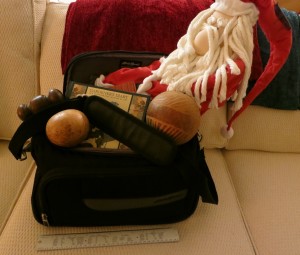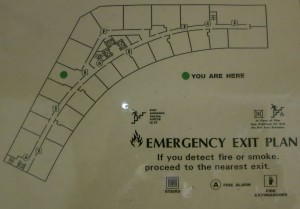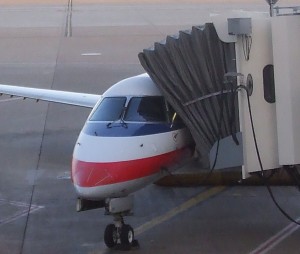KN, p. 159 “What IS that in your carry-on?”
Traveling during the holidays? We all try to stuff too much into the carry-ons, but there are special rules for what you can and can’t bring with you on the flight.
Just in case this is the first time you’re flying since 2001, when the regulations changed for everyone, here are two of the biggest no-no rules:
Don’t carry knives
Don’t carry guns
There are signs near every single U.S. security check area for carry-on luggage showing you the general list of what CANNOT be brought onto the plane, and some of the baggage check-in counters have physical examples of the no-nos. Here is a partial list of items that the TSA doesn’t want on the planes:
- Aerosols
- Blasting Caps
- Dynamite
- Fire Extinguishers
- Fireworks
- Flammable Paints
- Gasoline
- Grenades
- Liquid Bleach
- Explosives
- Spray Paint
- Tear Gas
- Turpentine
- Vehicle Air Bags
Why do you suppose people want to bring these items onto the plane? Because they are probably trying to avoid the extra baggage fee. Guess what? Nobody wants to sit next to a passenger that stows dynamite under the seat, no matter how much it is needed it for your business. Check with your airline for other no-fly items.
Click on the TSA link for their list:
http://www.tsa.gov/travel/security-screening/prohibited-items
The TSA has actually had to confiscate:
- Lipstick holder that contained a knife instead of lipstick
- A bag of exotic snakes
- Pliers with a knife as one side of the tool
- Loaded guns packed in a suitcase with stuffed toys
- Knives in the form of an interlocking belt buckle
- Grenades
- Book with carved out inner section holding bullets
- Anti-tank weapon
- C4
- Mace (the weapon seen in medieval jousts)
Click on the link below for other items that can’t be transported in the passenger section of a plane, and in some cases, not at all:
Suppose all your stuff is legal and you are good to get on the plane. All your shampoos and other liquids are stowed in your checked luggage. But, you still have a lot of carry-on paraphernalia – Laptop, book, coat, food for the plane, presents. Hmmm…
Space on a plane: It’s the time of year when people want to bring back the presents they have been given at their holiday gatherings. Unfortunately, most of them do NOT fit in the space below the seats or in the overhead storage. Those overhead spaces are SHARED space, meaning that you are allowed a space that is about the size of a weekender suitcase on a cross country plane with 100+ passengers.
If you are flying on a regional jet, there is barely enough room for a briefcase or a jacket up there, let alone packages or suitcases. Think kid’s backpack for overhead space size on a regional jet. You may be asked to keep your coat on, rather than stow it and in most cases, you will not be allowed to keep the presents/laptop/iPad in your lap during takeoff or landing. I’ve been on flights that have been delayed while extra items are taken off the passenger part of the plane and checked in with the baggage.
Your solution? Have your friends/family mail the packages to you. It’s cheaper than you think.
Take a look at the photo at the beginning of this article. No matter how much Sheila wanted to bring the Santa, the books and the maracas onto the plane, they did not fit into her carry-on. The bag is the regulation size (12” ruler in front of the bag) that fits under the seat and will fit nicely next to a laptop case in that same space. BUT, it is not big enough for the Santa, etc. We had to ship them back to our house at a cost of about $25.
Connecting flights: Plan ahead for your trip. If you have connections, see if both planes are the same size. Generally, they are not. And the different sized planes have different overhead space and under the seat space. I flew on a plane that had NO overhead space at all. That’s where the life jackets and oxygen masks were kept. Ask ahead, so you won’t be surprised and can pack or ship accordingly.
True story: Back in the 90s, a guy tried to board a plane in the Caribbean with a car door in tow. He needed it as a replacement part. He was given the option to have it placed in the cargo hold. He wouldn’t agree, so he and the door stayed behind. The entire incident defied logic because the door didn’t fit into the seat rows and certainly not in the overhead compartments. Plus, it was heavy! LOL
Have a safe flight and be kind to your fellow passengers and flight attendants! 🙂 That way, the Air Marshals won’t have to get involved. (“What does the TSA really do?)
*photo by Patti Phillips
KN, p. 159 “What IS that in your carry-on?” Read More »




